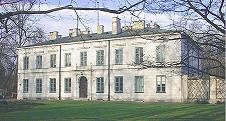Poznański barok
The Baroque in Poznań
Author(s): Zofia Kurzawa, Andrzej KusztelskiSubject(s): Fine Arts / Performing Arts
Published by: Krajowy Ośrodek Badań i Dokumentacji Zabytków
Keywords: Poznań version of the Baroque; seventeenth century; eighteenth century; Carmelite; Jesuit; Franciscan; Bernardine; Reformed Franciscan;
Summary/Abstract: The Poznań version of the Baroque is represented by great monastic realisations founded by the local gentry: Carmelite, Jesuit, Franciscan, Bernardine, and Reformed Franciscan churches, a Jesuit college and the interior of a Dominican church. The objects in question were raised by outstanding architects: Krzysztof Bonadura (active through the entire region, who introduced a type of a church modelled on the Roman Il Gesu), Jerzy and Jan Catenazzi and Bartłomiej Wąsowski. The Jesuit church, in which, thanks to Wąsowski, original solutions and unique forms, not employed elsewhere, were applied, became one of the most impressive Baroque objects in the Commonwealth. Baroque sculpture appeared in Poznań in the 1680s during the decoration of the parish church—stucco decoration on the interior, ascribed to Wąsowski, and on the outside — a complex of monumental ceramic sculptures on the façade. A stucco workshop of Alberto Bianco was established in Great Poland in about 1700, and became widely renowned throughout Great Poland. This was also the period of the origin of the works by Antoni Swach, who executed altars for his monastery. Finally, in the course of the eighteenth century, there arrived rather numerous Bohemian, Austrian and Bavarian sculptors, who worked mainly as carvers. Painting of the first half of the seventeenth century is represented by the Manneristic, Counter–Reformation works by two artists extremely significant for Polish art of the time: the Italian Tomasso Dolabello and Krzysztof Boguszewski. The Counter–Reformation favoured the development of guild religious paintings, and large altar compositions. Great variety is represented by portraits, predominantly the coffin portrait and, to a much smaller degree, the full–figure and semi–figure portrait. Popularity was enjoyed during the seventeenth century by the Franciscan Adam Swach, the author of easel compositions and polychromies in the churches of Poznań, Owińska, Ląd, Pyzdry, Kalisz and Wełna.
Journal: Ochrona Zabytków
- Issue Year: 1999
- Issue No: 3
- Page Range: 216-224
- Page Count: 9
- Language: Polish

